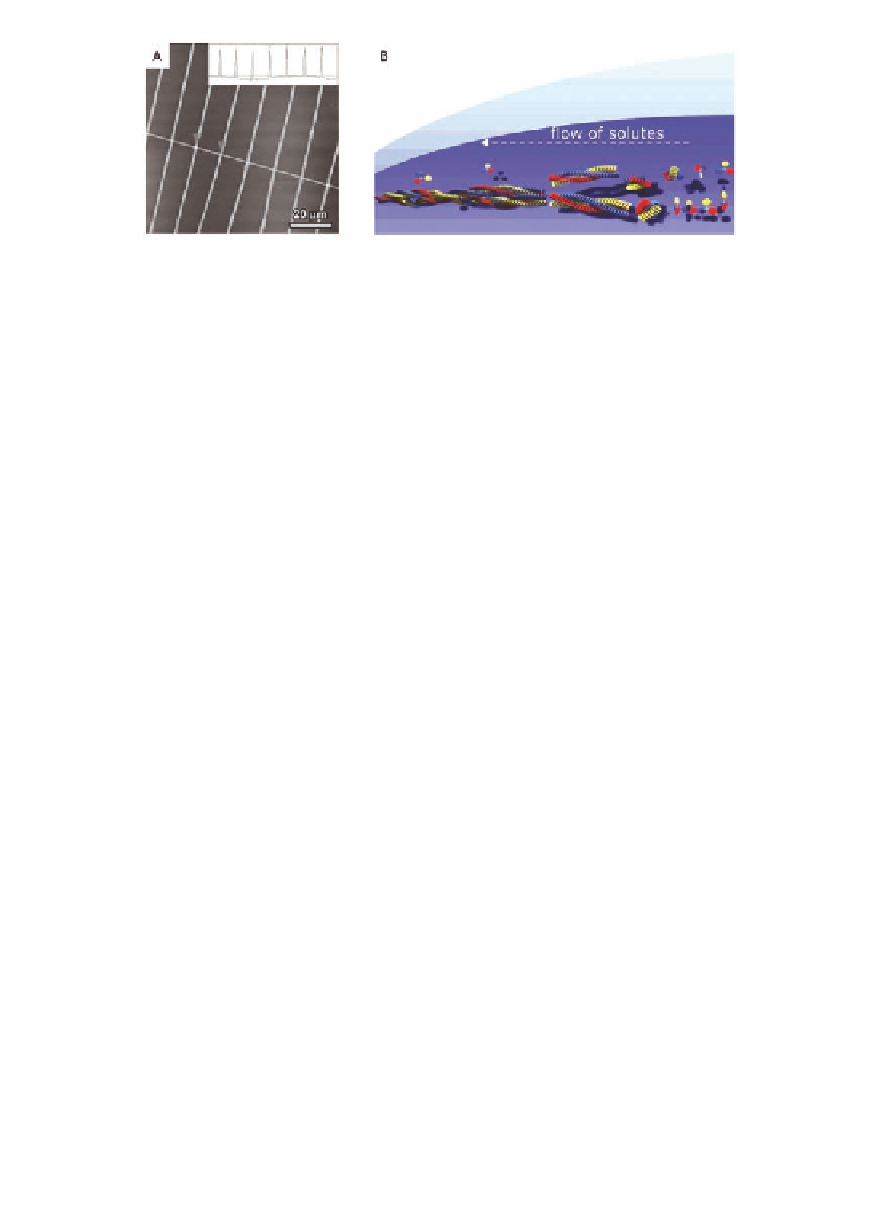Biology Reference
In-Depth Information
Figure 8.9
(A) AFM image of the linear pattern obtained after
dropcasting a 10
4
onto a mica surface; the inset shows a cross section through
the lines. (B) Cartoon illustrating the formation of these
lines; the contact line of the droplet is on the left, and upon
shrinking of the droplet a flow of porphyrin trimers in the
direction of the contact line occurs; the porphyrin stacks
subsequently start growing in the opposite direction.
µ
L droplet of a chloroform solution of
The main requirement for a successful formation of the well-
defined patterns is a fine balance between the self-assembly of
the molecules and the physical dewetting process. To prevent that
aggregation in solution determines the final shape of the structures
on the surface, the self-assembly of the porphyrin trimers should only
occur at the moment when dewetting takes place. This requirement
was nicely illustrated by the fact that a 100-fold increase in the
concentration of the chloroform solution of
-4
M) resulted in
the formation of randomly entangled fibres after dropcasting on
mica [15]. Clearly, in this case, self-assembly and dewetting are
out of sequence and as a result the surface structure resembles the
aggregate structure in the solution. A change of the solvent from
chloroform to the more apolar
4
(10
-hexane had a similar effect. While
the critical aggregation constant of the related porphyrin trimer
5
n
, a molecule with chiral alkyl chains (Fig. 8.10A), in chloroform is
0.2 mM, it drops to <10
-6
-hexane [17]. This much stronger
aggregation in the latter solvent results in the deposition of long
self-assembled fibres upon dropcasting a micromolar solution of
the compound on mica (Fig. 8.10B). Remarkably, AFM images of the
fibres revealed that they are still single molecule thick columnar
stacks of porphyrin trimers.
M in
n

Search WWH ::

Custom Search